Where ever you go these days you will see people in beautiful or historic locations with their cameras pointing at themselves rather than at the scene in front of them. The rise of social media is the cause. And our need to tell people where we are, what we are doing, what we are eating, in the form of a photograph – the selfie!
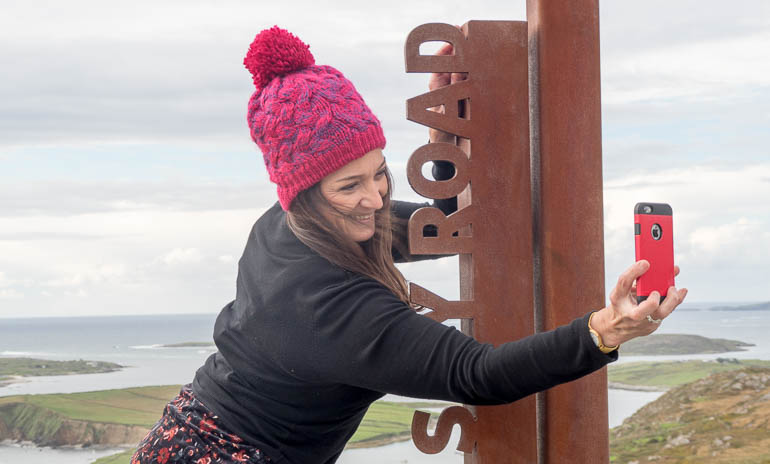
In the past photographers would set up their camera pointing back at themselves and activate a timer. This would give the photographer 10 or 12 seconds to go back in front and adjust his/her clothing and posture before the camera shutter triggered. Smile!
But as cameras were added to mobile phones, along came a new breed of photographers who didn’t know what a tripod was and hadn’t a clue about the self timer mode. And as the numbers grew, so did social media, and so the new photographers just turned the phone around and photographed themselves. And then phone manufacturers adapted, so the lens appeared on the front and back of the phone and the rest is history. We now have a deluge of people taking photos of themselves. And we have manufacturers and innovators scratching their heads to come up with products that satisfy this need to photograph ourselves. The most popular gadget has been the selfie stick…an extendable pole with a phone mount on one end and a hand grip on the other.
But this method, like hand holding, always means the camera is connected to the body and sometimes the results show with an awkwardly extended arm. That’s why I still prefer the older and more traditional self-timer option. And you can get an app for your phone that adds a self-timer. All you need then is a minipod to hold the phone…unless you rest it on a table or shelf. Check out the minipods and supports on Photographyattic: Tripods and other camera supports
One of the most adventurous selfie products I’ve seen is the Air Selfie…recently announced with a pre order offer price of 260 Euros.
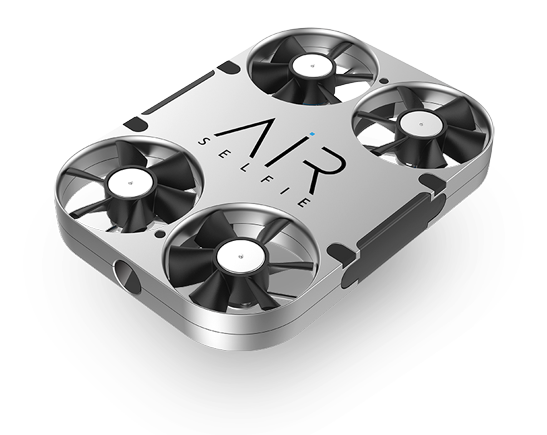
The AirSelfie is a pocket-size camera with a turbo fan that propellers to thrust the camera up to 20 meters in the air. It connects with your smartphone so you can take 5 MP HD photos or video of you and your friends from the sky. Possibly a little crazy price for most, but no doubt we will be seeing more aerial selfies in the future…especially when the Chinese copy the idea and knock them out on ebay for 39 dollars or so.
The Hoyarex filter system was really good: high quality filters.. Great variety of options in the range. Some glass filters. Solid holder. And a really useful rubber hood. But the Hoyarex System had a big flaw! And that has become evident over the years as more and more filters become scratched.
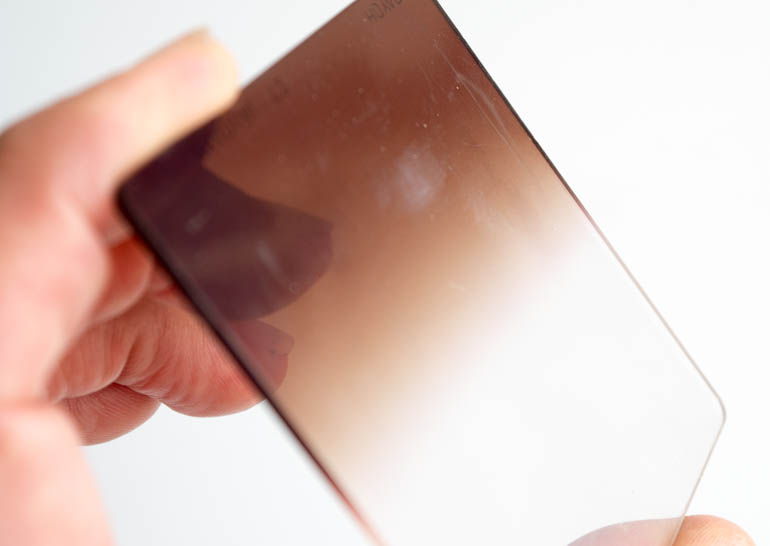
It’s not due to use either! These scratches occur when the filters are stored in their plastic case. The resin filter catches the edge of the case, which usually bends a bit in the middle. So after being jostled around in a camera bag the rubbing effect causes the resin to mark or scratch. 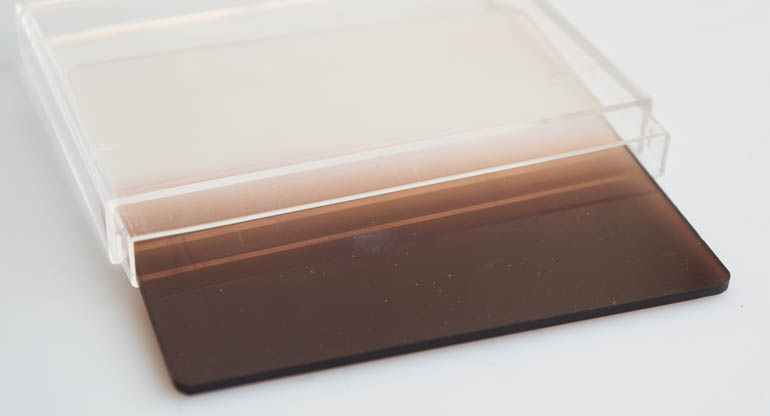
So here’s a tip to prevent further wear. Buy a packet of lens tissues and wrap one over the filter at the top end that sticks out of the case. Then the filter wont get rubbed. You can use toilet tissue, but a lens tissue is softer and has no fibres that will come off and cause dust problems. 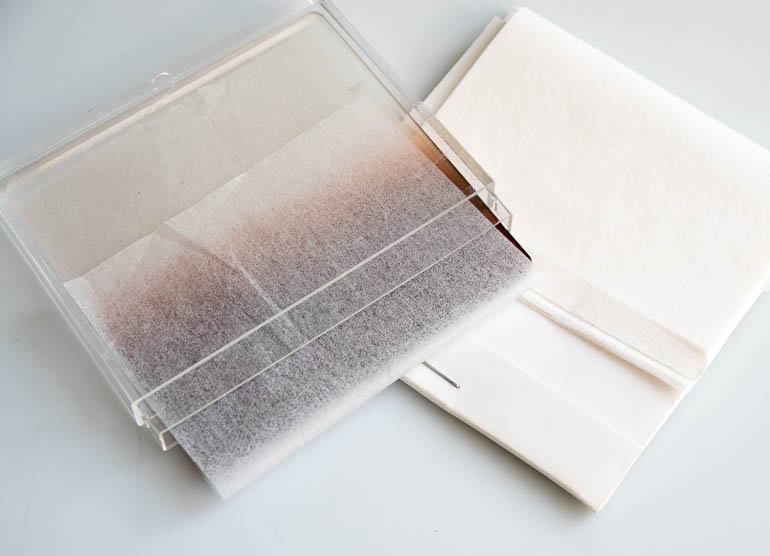
View the entire range of Hoyarex filters here
The Hoyarex Skylight 1B filter – cat number 011 – is one of the most valuable filters in the Hoyarex range, yet is often overlooked, because its not a special effect filter.
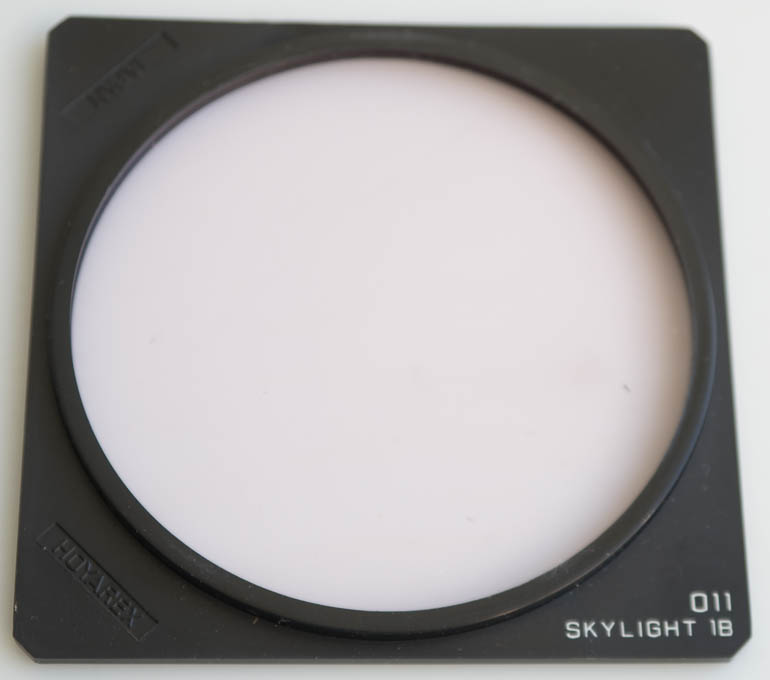
But this underused filter will do two things to ensure your photography improves.
Firstly, and most importantly, the filter is a lens protector. The Hoyarex system is made so that when a filter is placed in the back slot it removes any possibility of dust reaching the lens. So if the holder is left on with a filter inserted the lens wont get dust falling on the surface or scratches. The skylight is the obvious choice as it has no special effect value. It’s also one of the few filters in the Hoyarex range that’s made from glass so optically very good.
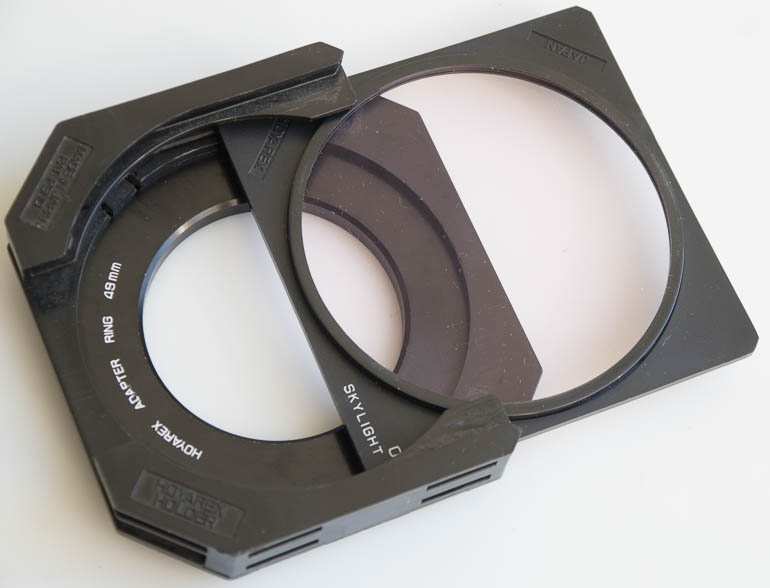
But the filter has another use. A skylight filter has a very slight pink tint that has a warming effect when shooting in hazy days, so landscapes can be photographed with slightly more clarity. 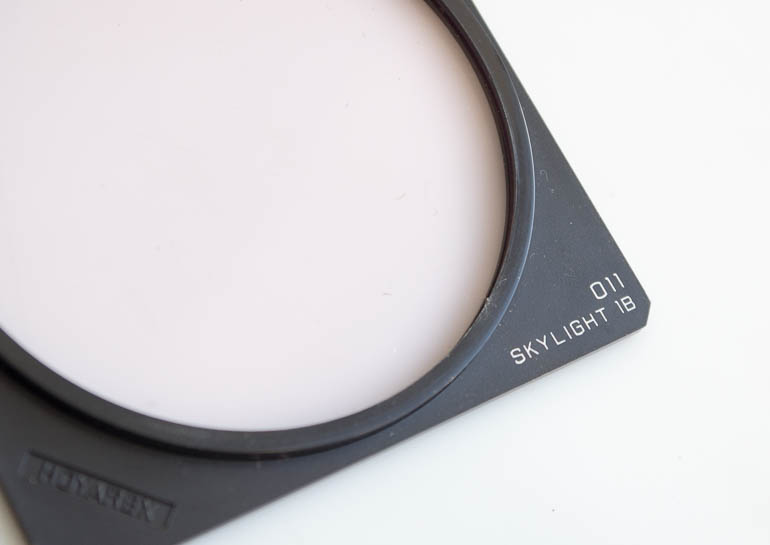
Using the filter in the back slot near the lens means there still another slot free for a special effect filter when you want to add a graduated effect, sepia tone or spot for example. 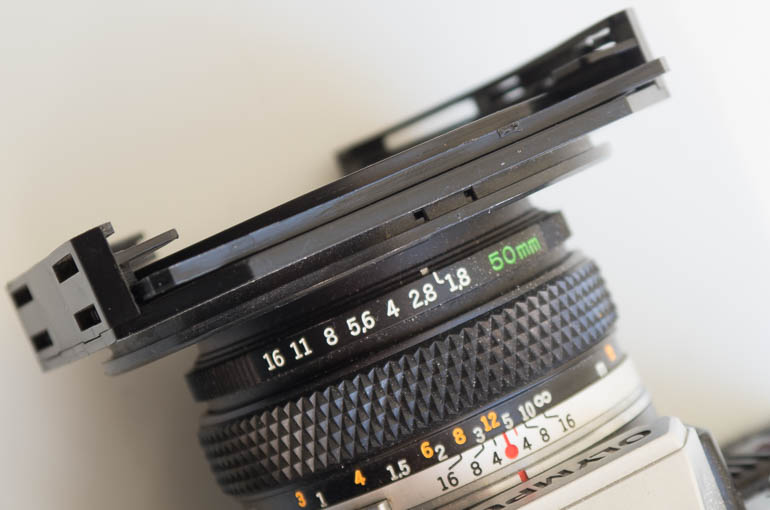 Photographyattic has the Hoyarex 011 Skylight 1B glass filter for sale here
Photographyattic has the Hoyarex 011 Skylight 1B glass filter for sale here
Engineer Amos Dudley has merge an age-old craft with cutting-edge technology and created the world’s first fully 3D printed, interchangeable lens camera. He’s sharing the design files on Pinshape so those with 3d printers can also create the camera.
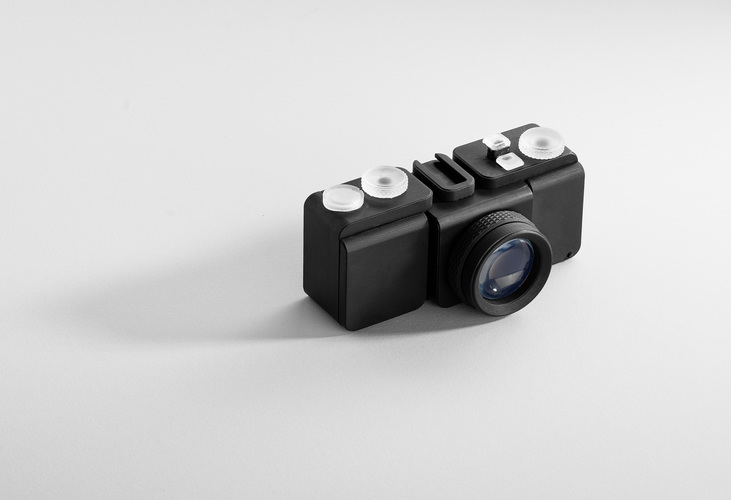
Details of how the camera was made from concept to creation are here SLO 3D printed Camera
Meyer Optik are bringing back the 80 year old Primoplan 58mm f/1.9 using Kickstarter funding. The funding has already exceeded the original 50k dollar goal by over 4x!
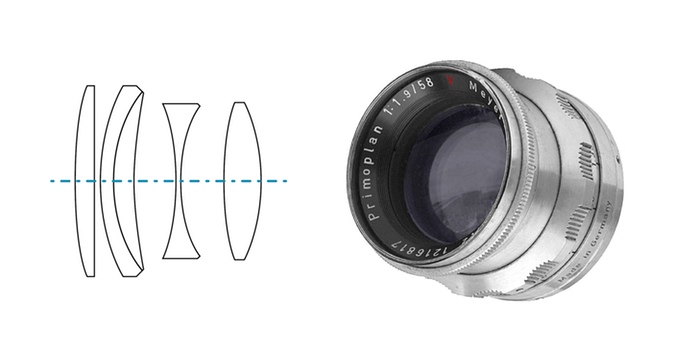
The lens, developed by Meyer Optik’s engineer Paul Schaefter, and originally screw thread, has the unusual ability to create different bokeh effects and is being offered in the following modern camera mounts: Canon EF, Nikon F, Sony E, Fuji X, Micro 4/3, M42, Leica M and Pentax K.
Full details of the lens and the Kickstarter campaign here: Bring back the Fabulous Wonder Bokeh Lens: Primoplan 58 f1.9
An interesting and under used filters in the Cokin range is the Incolor 061. It’s part of the spot color range, and unlike many of the other colour spot filters this one is very practical and can be used in different ways for different effects. The spot filters with colour can sometime look quite poor if not used well, whereas this one can be adjusted to give a soft focus style effect or a lovely white vignette. This makes it perfect for wedding photography or portraits.
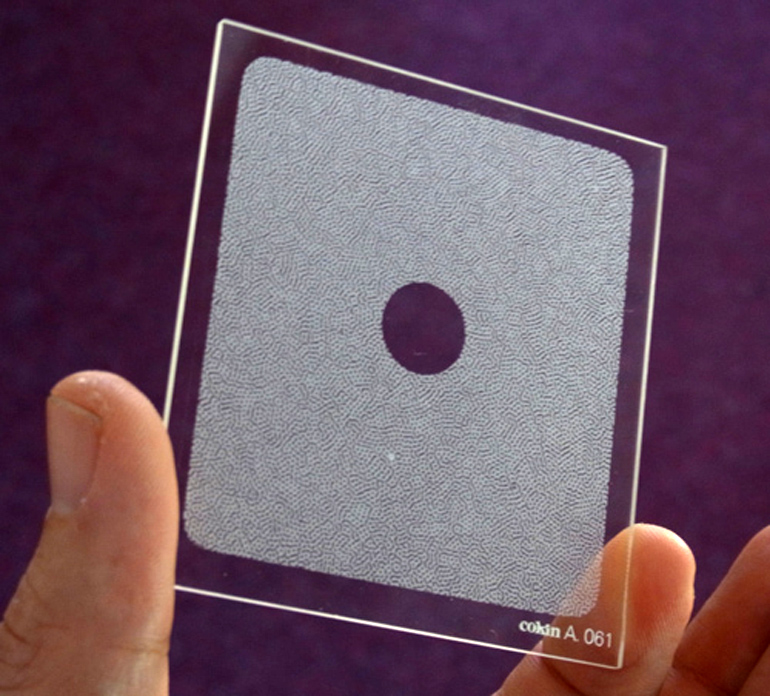
The filter is available in Cokin’s A and P series and has a small hole in the centre. When placed in front of the camera lens the hole either appears small or large, hard edged or soft edged, depending on the lens focal length and aperture used.
To get a large soft edge you should take photos using a longer focal length (around 50-80mm is fine with this filter) and use a wider aperture. If you want a more pronounced circle, use a wider lens and a smaller aperture.
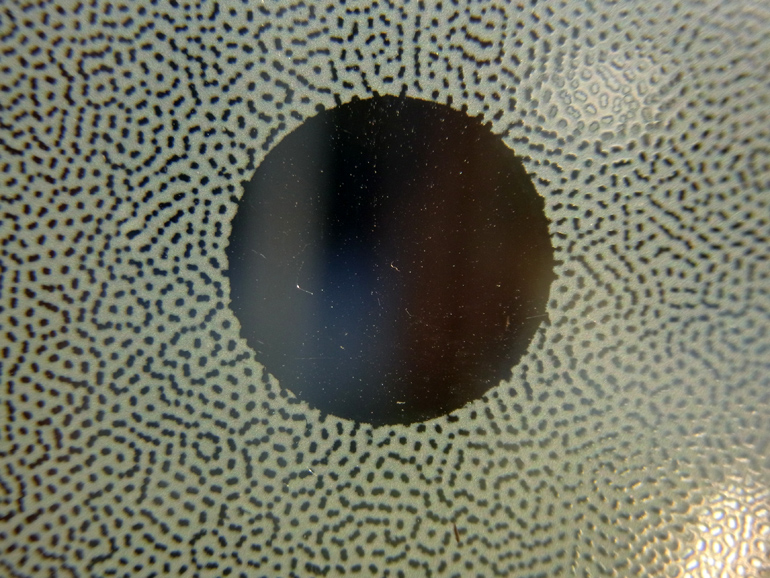
The texture on the filter can be made to look white/grey or neutral depending on how parallel it is to the ccd/film…and if light is reflecting on the rear surface.
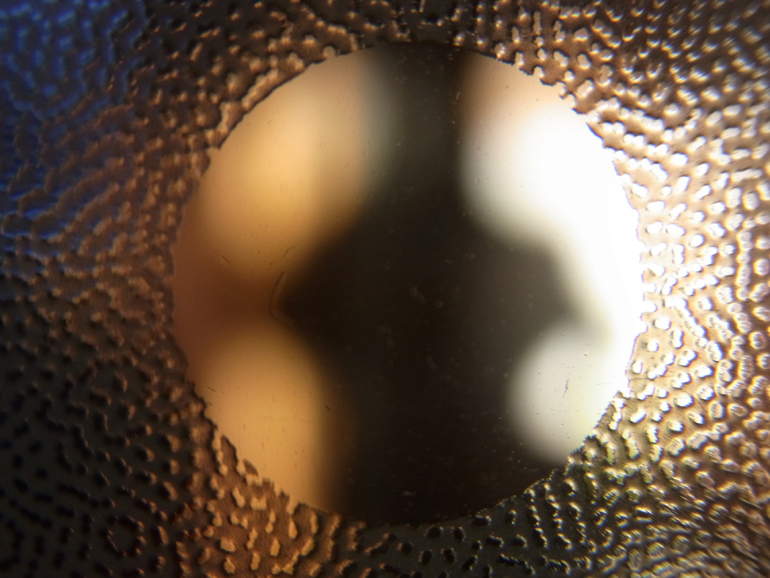 You could focus lock on the filter so the subject through the hole is blurred and the filter texture sharp. This makes interesting creative shots.
You could focus lock on the filter so the subject through the hole is blurred and the filter texture sharp. This makes interesting creative shots.
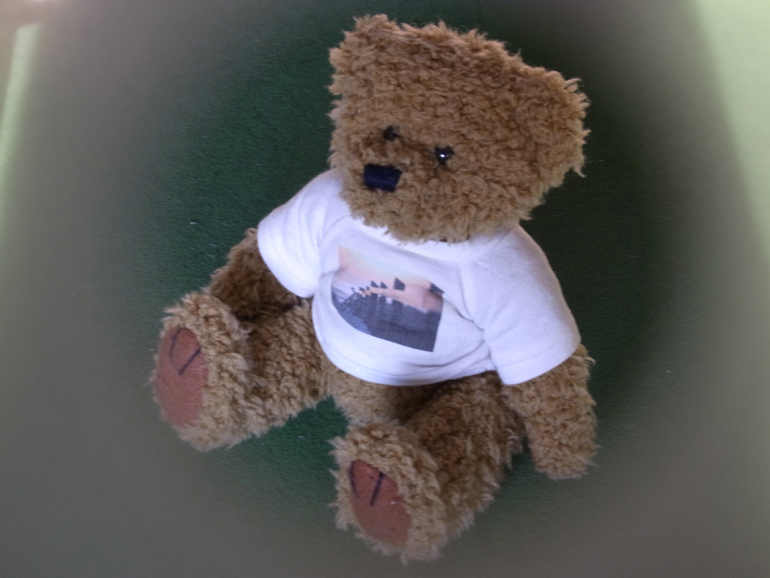 A longer lens and wider aperture was used here. Notice how soft the edge is and how neutral the filtered area is.
A longer lens and wider aperture was used here. Notice how soft the edge is and how neutral the filtered area is.
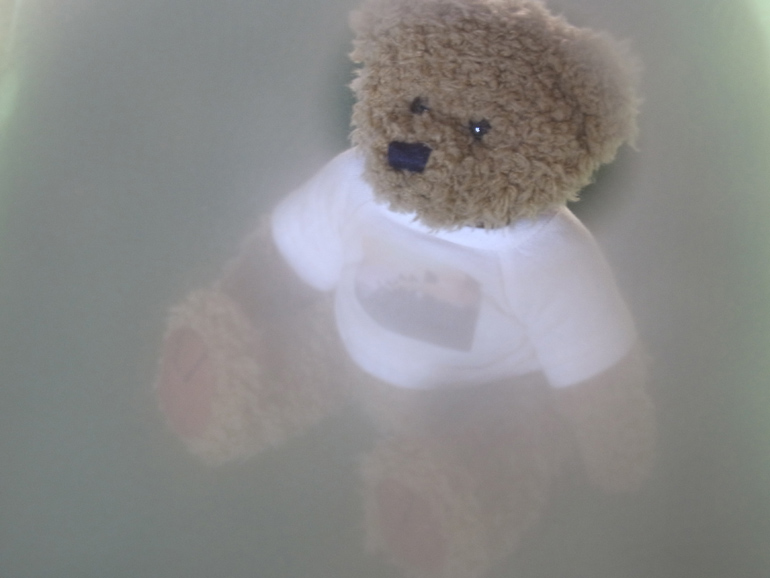 Here the filter was adjusted so the spot was on the face. You can do this if the filter is hand held in front of the camera. The filter was held further away and angled so light reflected on it.
Here the filter was adjusted so the spot was on the face. You can do this if the filter is hand held in front of the camera. The filter was held further away and angled so light reflected on it.
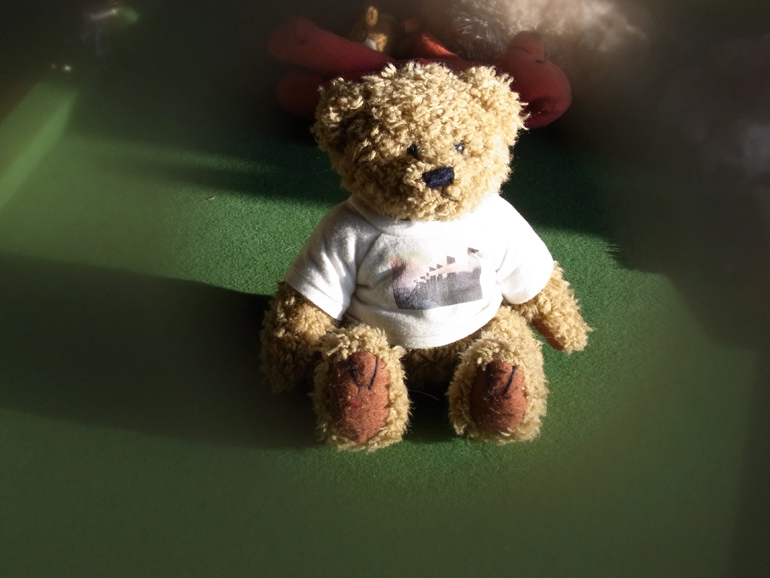 Here’s the filter being used to it’s best. Good choice of aperture and focal length gives a lovely diffused vignette.
Here’s the filter being used to it’s best. Good choice of aperture and focal length gives a lovely diffused vignette.
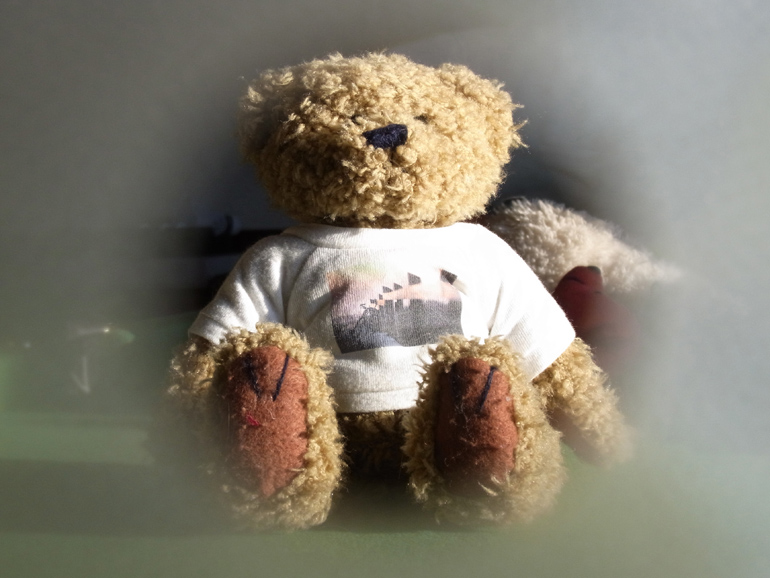 Another version with a slightly more defined effect. Using the filter like this is great for wedding photography and romantic portraits.
Another version with a slightly more defined effect. Using the filter like this is great for wedding photography and romantic portraits.
You can buy the filter here: Cokin A series 061 Spot In color Filter
Occasionally I will write about interesting gadgets to help improve photography…today I introduce the Gorillapod.
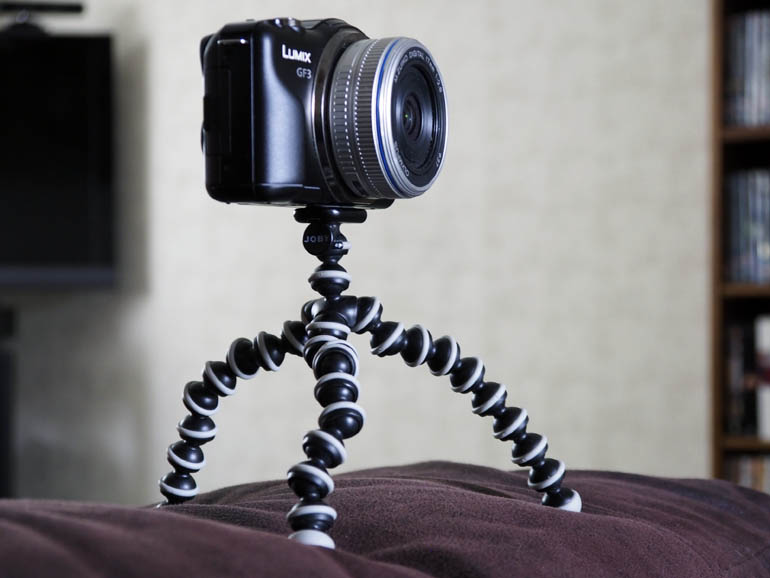
A camera support is an essential piece of kit to prevent camera shake, which would result in blurred photos. Tripods ( a large stand with three legs) are common among enthusiast photographers, but they are bulky and often heavy. So manufacturers produce small alternatives, in the form of miniature tripods, pods, clamps, beanbags, spikes etc.
The Gorillapod from Joby is a unique version of a mini tripod. Yes it has three legs and can be used in the conventional tripod way , but the Gorillapod has a unique leg design made of several stacked ball joints that bend, allowing total flexibility.
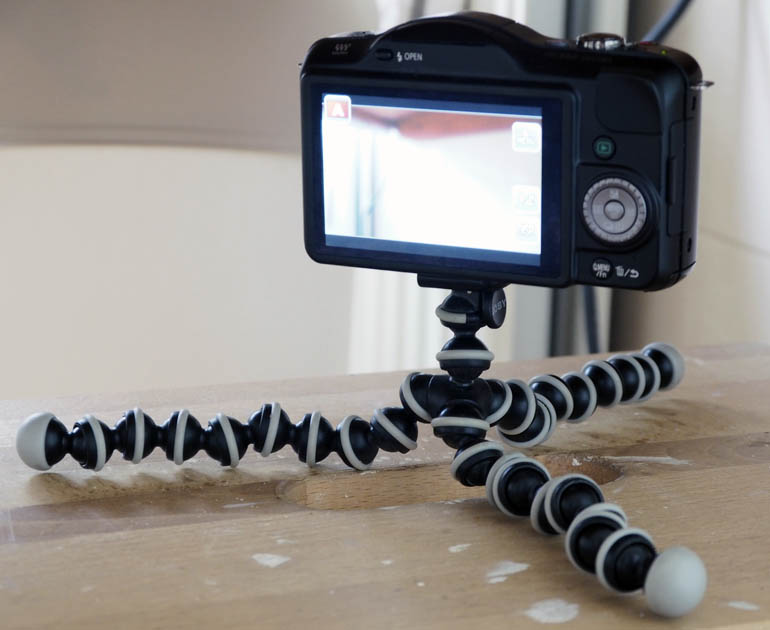
The design made from a gripping type of plastic means it’s not only good on a bench or table, but also on uneven surfaces and, thanks to the bendy legs, it can also be wrapped around a table leg, or tree branch to provide support in many versatile ways.
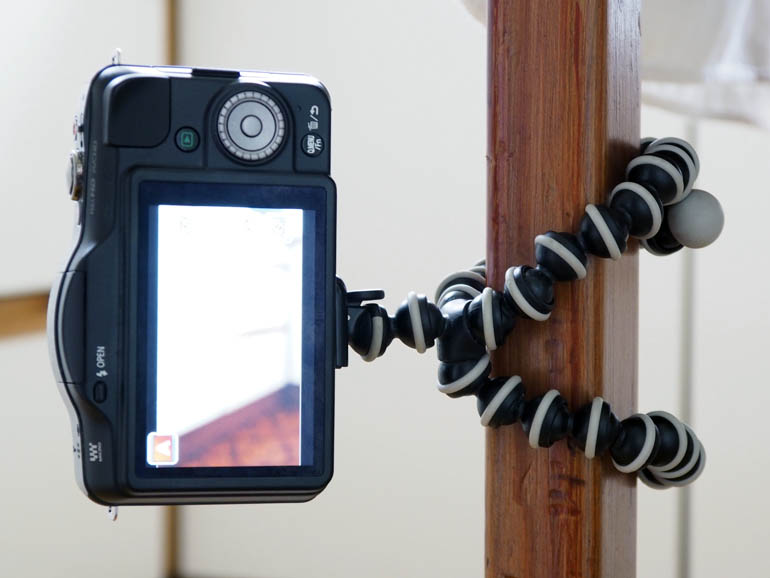
The one I’ve illustrated here is the compact model. It weighs just 45 grams so you’d hardly know you have it with you. It will support a compact digital camera or phone, but not an SLR. Joby also make larger versions for SLRs.
Check out other camera supports here
The small FM-LM3 slip on flash supplied with the Olympus OM-D E-M5II is a really useful addition for close up shooting, but the light can be very direct and harsh resulting in strong defined shadows.
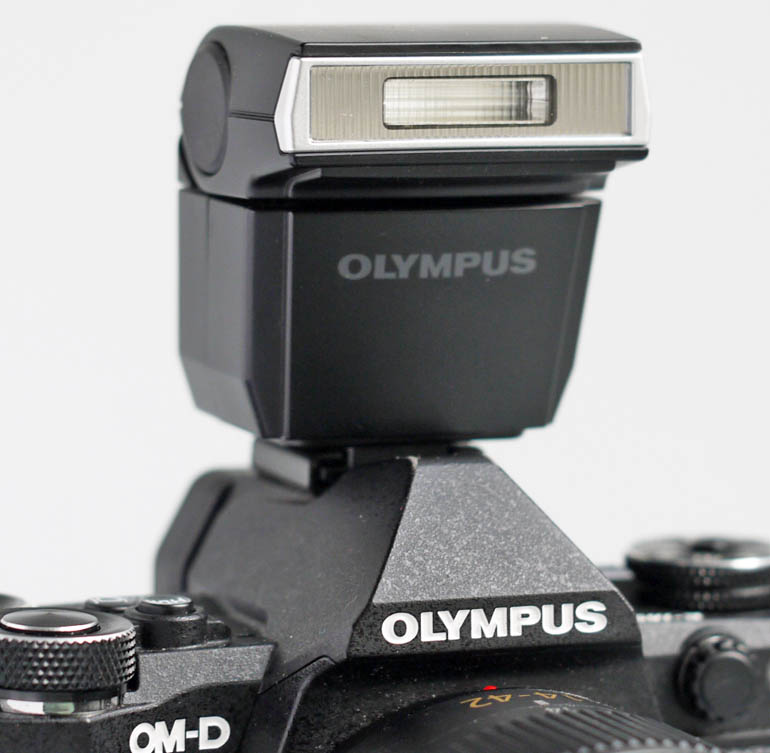
I found a way to improve it using a gadget sold in the 70s called the Rima Blitz Flash Converter.
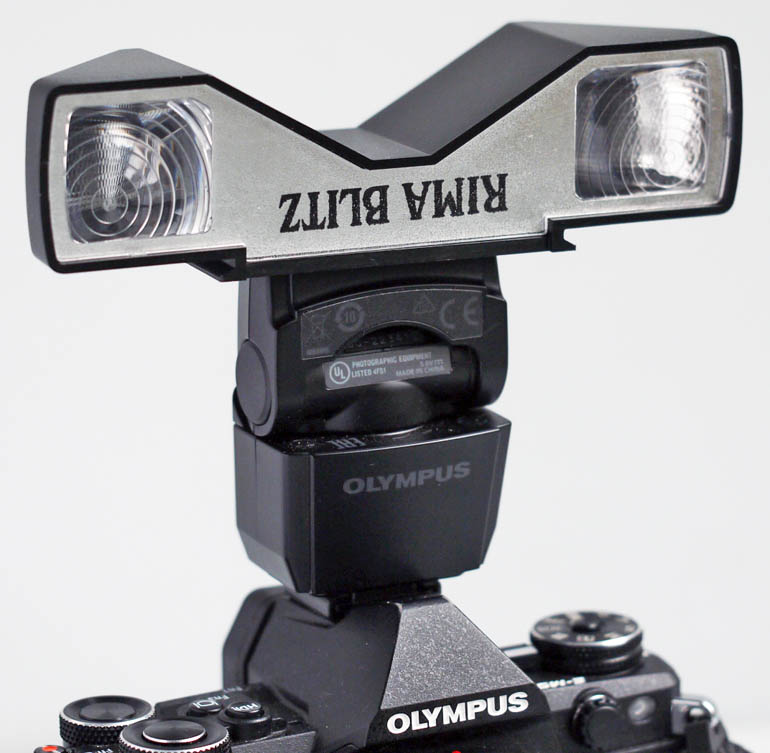
This handy gadget was designed for use with a small flashgun mounted on a film camera, but can also be used on the Olympus FM-LM3 flashgun. It splits the flash beam into two giving a wider spread of light almost like a really expensive macro flash set up.
You can find them occasionally on eBay and they original came in a box with some colour filters, a mounting adaptor to hold the converter securely on the flash and a right angle shoe adaptor for flashguns without a bounce facility.
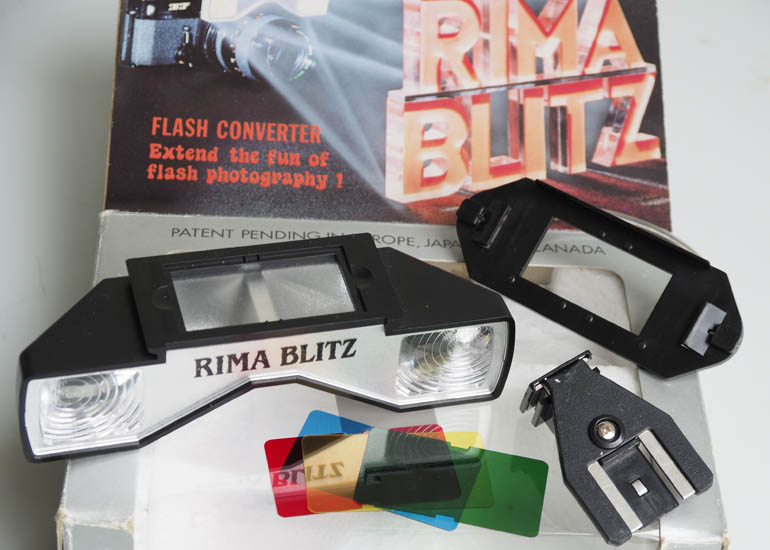
The mounting adaptor doesn’t work with the FM-LM3 so you need to hold the Rima Blitz converter in place unless the camera is level and then it will rest on top without need of any support.
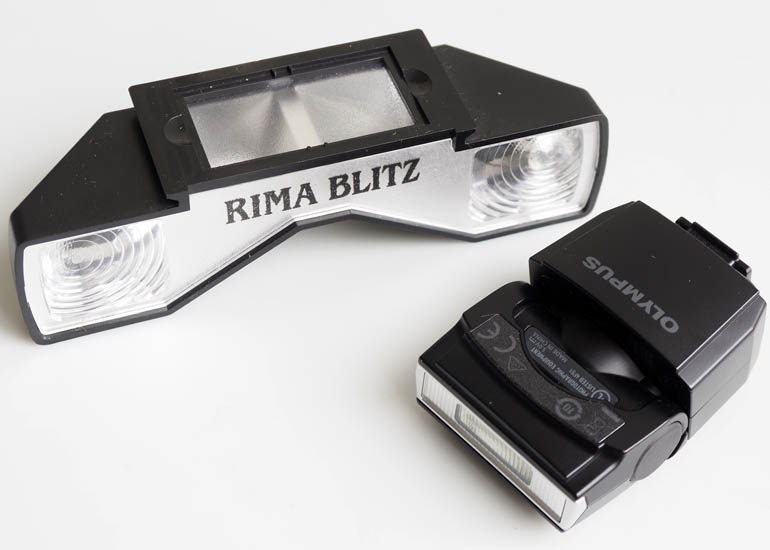
The camera’s flash output is reduced due to the bouncing of light inside the converter but the camera’s automatic exposure system compensates for the change in flash level so photos with the Rima Blitz in place will be correctly exposed.
Here are two examples of the Rima Blitz Flash Converter in use on the Olympus OM-D E-M5II’s FL-LM3 flashgun
Straight flash without Rima Blitz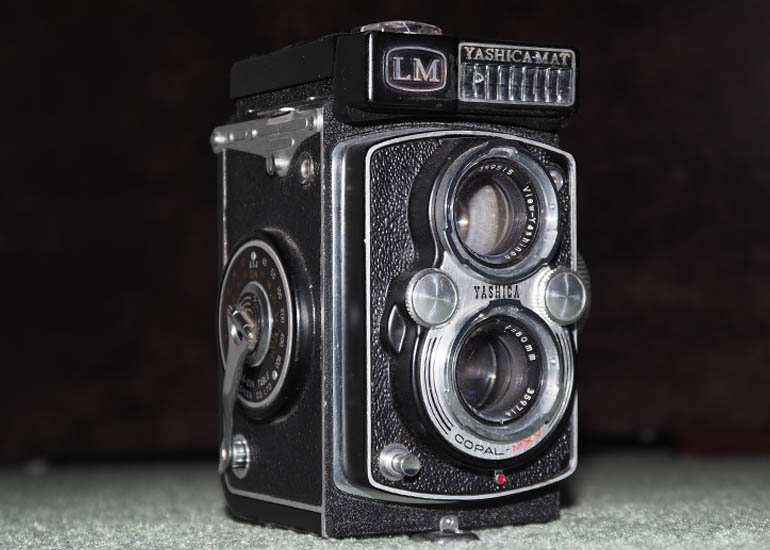
Flash with Rima Blitz attached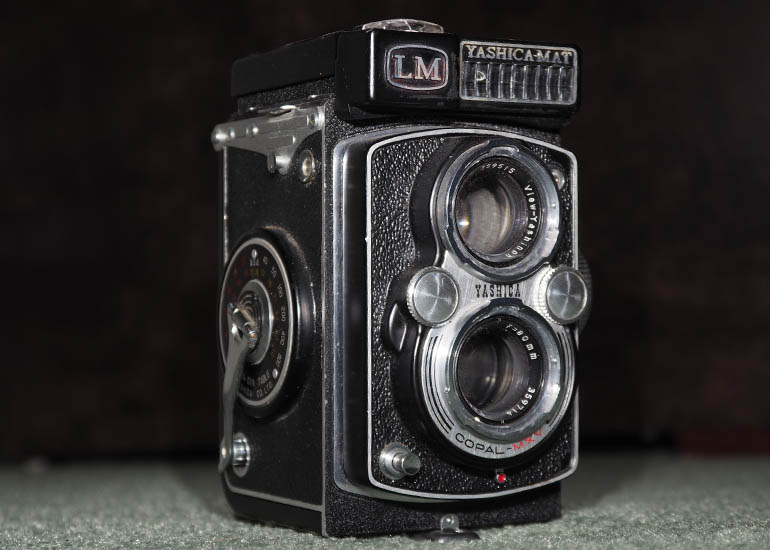
The main difference here is there’s less reflection on the camera’s silver coloured front plate and there are two soft shadows behind the camera on the surface.
Straight flash without Rima Blitz
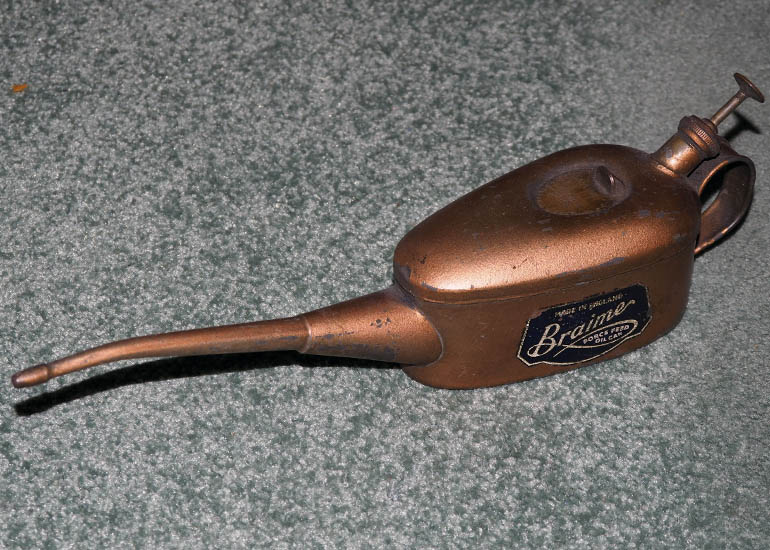
Flash with Rima Blitz attached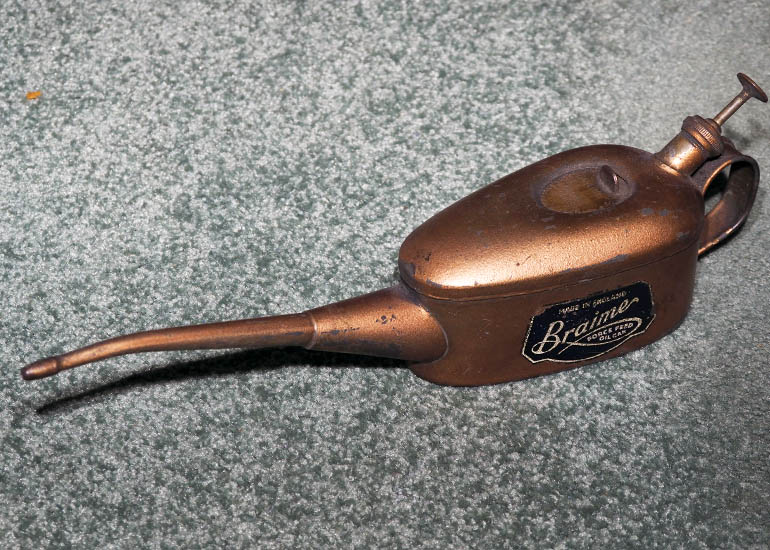 Here the shadows have lost their hard edge under the spout and plunger when the Rima Blitz is attached.
Here the shadows have lost their hard edge under the spout and plunger when the Rima Blitz is attached.
Rima Blitz Flash converter for sale here: Rima Blitz Flash Converter kit
Many of us have a need to photograph small objects for inclusion with auction posts on sites like eBay, or on shops such as Etsy, or to show your products on you own web site. There are also many who have an interest in photography of insects and other close up subjects from an artistic perspective.
Often the available light isn’t good enough in such situations so you resort to the built in flash of your DSLR, or slide the hotshoe mounted one to the camera. And that’s where you may find you have a problem.
When shooting close ups the lens is often so close to the subject that it obstructs the flash and results in a shadow of the lens cast over the subject. A ring flash is attached onto the lens. It provides a circular light that results in shadowless illumination. This is ideal for small items, and the light wraps around 3D items so you get a more even tone.
You can buy ones made by your camera’s manufacturer, but these tend to be very expensive so it’s worth looking around for an independent model, and some great older ones can be picked up for much less money. The manufacturers’ ones and some of the more expensive independents have TTL (through-the-lens) exposure so they adjust the flash output and compensate automatically for close up extensions and filters. But as most cameras used now are digital it’s easy enough to use an older manual ringflash and check the result on the LCD display.
At PhotographyAttic we have a small selection of used models and really like the Sunpak GX-8r because, unlike others, the batteries are in a separate power pack…and that means the flash unit attached to the lens is much lighter. This is an important consideration as it puts less strain on the lens mechanism. There’s a review of the Sunpak GX8r here
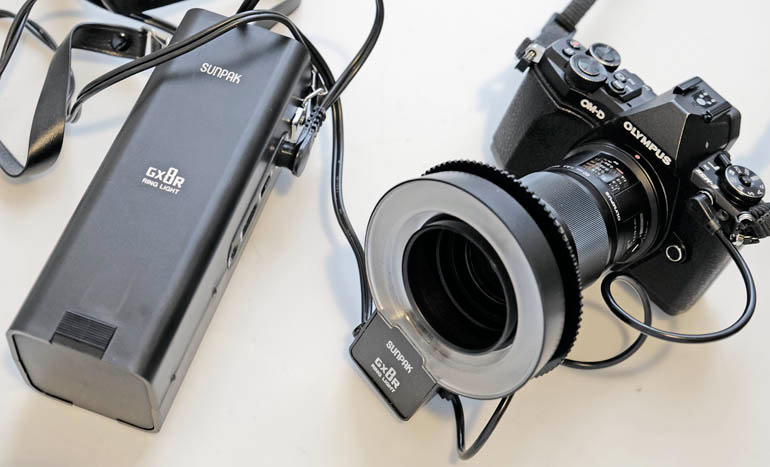
For those on a budget, check out the Centon MR20. It does have batteries in the flash, but just two AAs so its not too heavy. This flash unit was also made for the Vivitar, Starblitz and Cobra brands too. Doi also made an interesting unit for those who don’t have a flash sync socket on their camera, this one had the battery pack that slides onto the camera’s hot shoe.
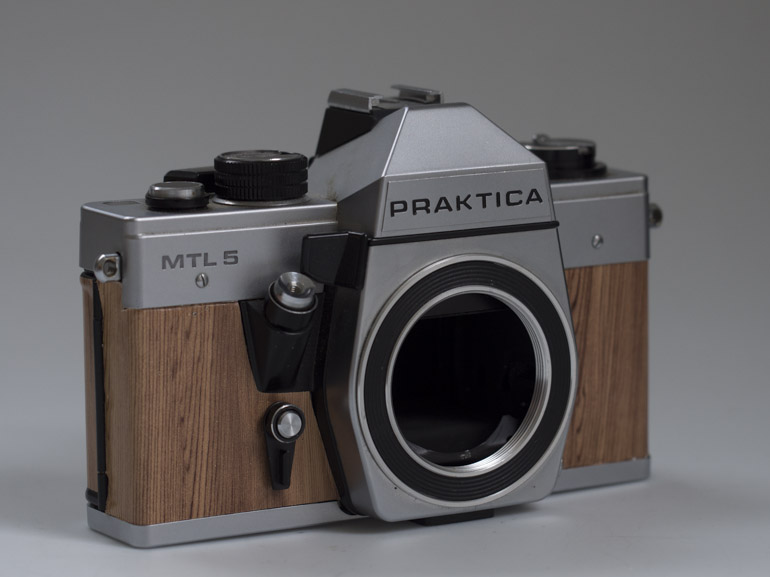 Yes you can give your old Praktica a new lease of life for just one quid.
Yes you can give your old Praktica a new lease of life for just one quid.
There’s a growing trend to replace the leather/plastic trims on vintage cameras with fancy new wood veneers, posh patterned leathers or exotic animal skins. All options cost a fair few quid and usually mean you sending off for a mail order deal.
Here’s a way to give your old camera a new look for just one pound. Those who remember Blue Peter will be familiar with sticky back plastic which was used for hundreds of DIY projects. Today high street Pound Stores are selling rolls of self adhesive patterned material for £1, and one option is this wood veneer.
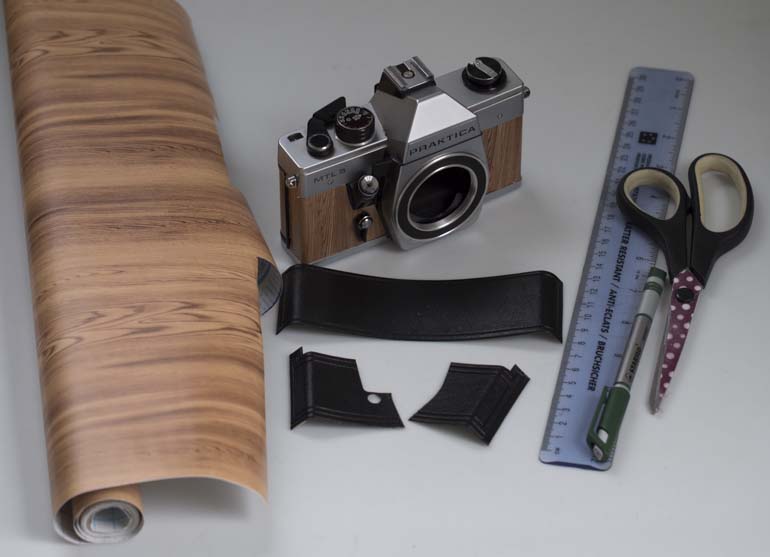
All you need to do is remove the camera’s existing leather/plastic trim, use the trim as a template, cut out the new replacement from your roll, peel off the back and stick it in place. You can cover some books / furniture with the rest.
It won’t give the luxury feel of the leather products, so should not really be considered if you’re still using the camera regularly, but it does make an attractive cover if the camera is to become an ornament.
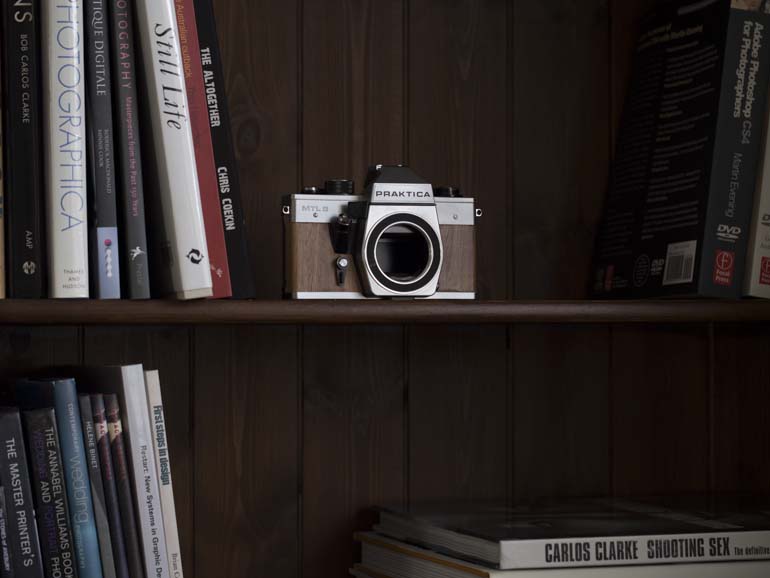
If you prefer a high quality leather version check out this great article on recovering a Praktica MTL3.
































